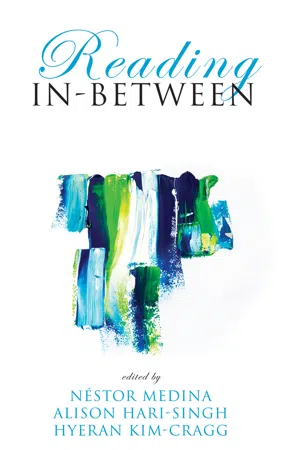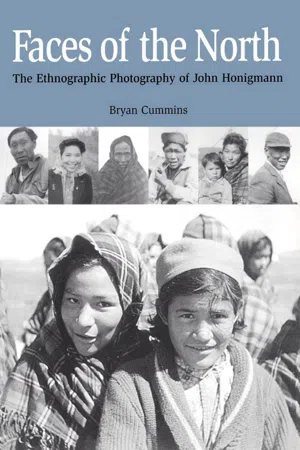History
The Cree
The Cree are a First Nations group indigenous to Canada, primarily inhabiting the plains and woodlands of the northern Great Plains. They have a rich cultural heritage, with a traditional lifestyle centered around hunting, fishing, and gathering. The Cree have also played a significant role in Canadian history, particularly in the fur trade and interactions with European settlers.
Written by Perlego with AI-assistance
3 Key excerpts on "The Cree"
- eBook - ePub
Reading In-Between
How Minoritized Cultural Communities Interpret the Bible in Canada
- Néstor Medina, Alison Hari-Singh(Authors)
- 2019(Publication Date)
- Pickwick Publications(Publisher)
The indigenous peoples of Canada continue to carry out the task of self-defining their theology, and Bible translation is an important part of that. Indigenous peoples bring an important perspective to the work of Bible translation and interpretation because our identities and spiritualties are defined by our understanding of how stories work. For example, take the narrative memory of the historical formation of treaties, which is essential to Cree peoples’ present identity. The claims that The Cree Nation makes on the basis of these narratives not only necessitate an assertion of historicity and reliability but also embrace the dynamic/stable qualities of these histories:The dynamic nature of Cree narrative memory . . . could be conceived of as an organism, growing and shifting. Nonetheless, like all organisms, Cree narrative memory has a structure within the parameters of possibility, and there is a great deal of stability . . . Humility is a primary characteristic of Cree Narrative memory and acknowledges that narratives are open-ended. There is no end to how they can be interpreted198Among many of the indigenous nations of the Americas, there are stories and legends about people having visions of a race of people who would come and bring something good, sometimes even bringing a black book. My friend Adrian Jacobs tells the story of the Hopi, whom he had an opportunity to visit a few years back. They tell the story of Pahana, their long-lost, white brother, who would come one day and, together with them, complete what was lacking in both groups’ (the indigenous and the white) understanding. The legend with which I am most familiar is among the Plains Cree. They say that Jesus himself met with them in a place just outside of Regina, just prior to his ascension. He told them that the white man was coming and that the plains people were to learn from them what was the best. The best they had was the Bible and, of course, Jesus. It is because of these multiple stories among the First Nations and the fact that their stories connect with the Bible story that it is essential that a narrative approach to the gospel includes translation into indigenous languages. Such translations will have to go beyond linguistic and technical matters and include the cultural and socio-historical understanding of indigenous peoples. - eBook - ePub
Faces of the North
The Ethnographic Photography of John Honigmann
- Bryan Cummins(Author)
- 2004(Publication Date)
- Natural Heritage(Publisher)
2The Innu (Montagnais-Naskapi) occupy the Labrador-Ungava Peninsula in the lands east of Cree territory. Historically, they have often been treated as two distinct populations, but in recent years have come to call themselves “Innu” (roughly, “human beings”). The northern Innu (Naskapi) occupy the northern half of the peninsula, hunting caribou in the vast land between Hudson Bay and the central Labrador coast. In the north, they are bounded by Inuit and in the south by the Montagnais. The latter rely heavily on moose and woodland caribou. The two nations share essentially the same culture, with the differences largely ones of adaptation to different environments. While the Montagnais live in a boreal forest, the environment of the Naskapi is, in many cases, a “barren-land.”3 As well, there are very slight dialectical differences. Indeed, linguists suggest that both peoples speak eastern dialects of Cree.The Ojibwa, like The Cree, expanded their territory as a result of the fur trade. Originally occupants of the shores of Lakes Huron and Superior near Sault Ste. Marie, they moved west and north. As The Cree migrated west, many Ojibwa moved into their former territory, while others moved onto the Plains to become the Plains Ojibwa. This dramatic movement created major differences among the different Ojibwa peoples. Perhaps one of the most intriguing of these is the northern Oji-Cree of Ontario. Kehoe4 notes that, by the 1770s, the Ojibwa had come to occupy most of the southern half of northwestern Ontario, west to the shore of Lake Winnipeg. Many started making trading trips to Fort Albany, on James Bay. There, in the boreal forest, many tended to intermarry and hunt with The Cree, producing bands that spoke a dialect derived from the two cognate Algonquian languages, Cree and Ojibwa. Today, many Ojibwa bands consider themselves to be Ojibwa-Cree, or simply Oji-Cree.5 - eBook - ePub
Pursuits of Happiness
Well-Being in Anthropological Perspective
- Gordon Mathews, Carolina Izquierdo, Gordon Mathews, Carolina Izquierdo(Authors)
- 2008(Publication Date)
- Berghahn Books(Publisher)
miyupimaatisiiun become a reflection of an idealized past, a marker of a particular historical period that will expire with the passing of this generation of elders? While many do still retain the practices and values inherent in “being alive well”, others see such dramatic changes occurring in the younger generations that they can imagine a day when this ideal is lost to an irretrievable past or becomes reified as a relic that one must struggle to preserve. Others, like Ted Moses, view the changes as part of the continuing narrative of The Cree nation. Again, in the words of Moses:Our way of life has never been a static one, fixed forever in time to be exactly the same thing. There have always been changes—there were many periods before contact with Europeans when we were completely independent, there were adjustments which our ancestors made to accommodate the fur trade, and there were other adjustments when the fur trade began to decrease in importance—and we have continuously adapted ourselves to make beneficial changes for our people. What has endured is our principles and our values.…Part of the challenge which is facing us now as an indigenous nation is to stay true to the rich and meaningful cultural heritage which we have inherited and to apply it to our current realities and circumstances. The challenge which I believe lies before us is nothing more nor less than a process of reinventing ourselves. This is what our ancestors had to do when faced with new realities and new opportunities and this is now what we need to do (2005, 4).Drawing on both ageless traditions and contemporary prospects and constraints, Moses is addressing the fundamental tension of a traditionalist perspective. Bush camp, hunting, and related activities reference a particular past and concentrate issues of identity around a specific set of cultural beliefs and practices immediately understood as Cree. If cultural property, activities, and beliefs define The Cree and distinguish them from non-Cree in the face of expansive northern development, there is a risk that “meaningful cultural heritage” will be lost if altered in any way. Thus, if Cree well-being is based on one's relationship to the land and a Cree morality of bush-related activities such that the embodiment of that relationship to the larger social and political processes is epitomized as the ideals of miyupimaatisiiun
Index pages curate the most relevant extracts from our library of academic textbooks. They’ve been created using an in-house natural language model (NLM), each adding context and meaning to key research topics.
Explore more topic indexes
Explore more topic indexes
1 of 6
Explore more topic indexes
1 of 4


